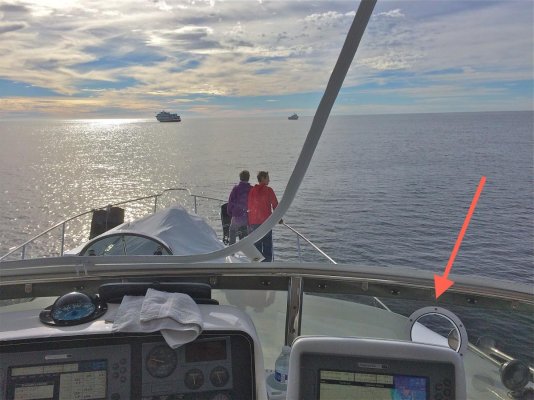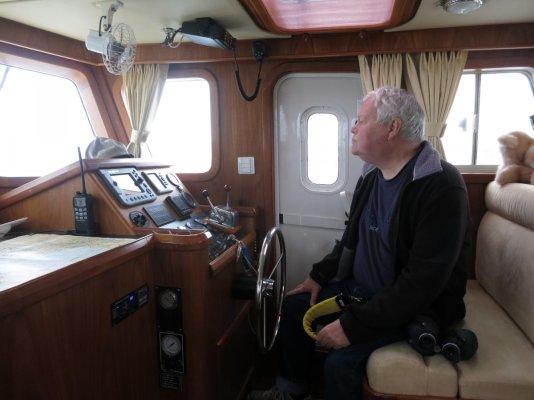- Joined
- Jan 9, 2014
- Messages
- 4,181
- Location
- USA
- Vessel Name
- N/A
- Vessel Make
- 1999 Mainship 350 Trawler
I use both helms. Arriving and departing from a dock, I'm at the lower....but it's easier with a side-door with a flush step out to the side deck right at the mid-ship cleat. I operate from the lower when its cold or raining.
Any other time I operate from the upper helm. The view is better and it's more comfortable (no seat at my lower helm).
Any other time I operate from the upper helm. The view is better and it's more comfortable (no seat at my lower helm).

 I have copied the same approach to my Lexan fly bridge but have no photos yet.
I have copied the same approach to my Lexan fly bridge but have no photos yet.
